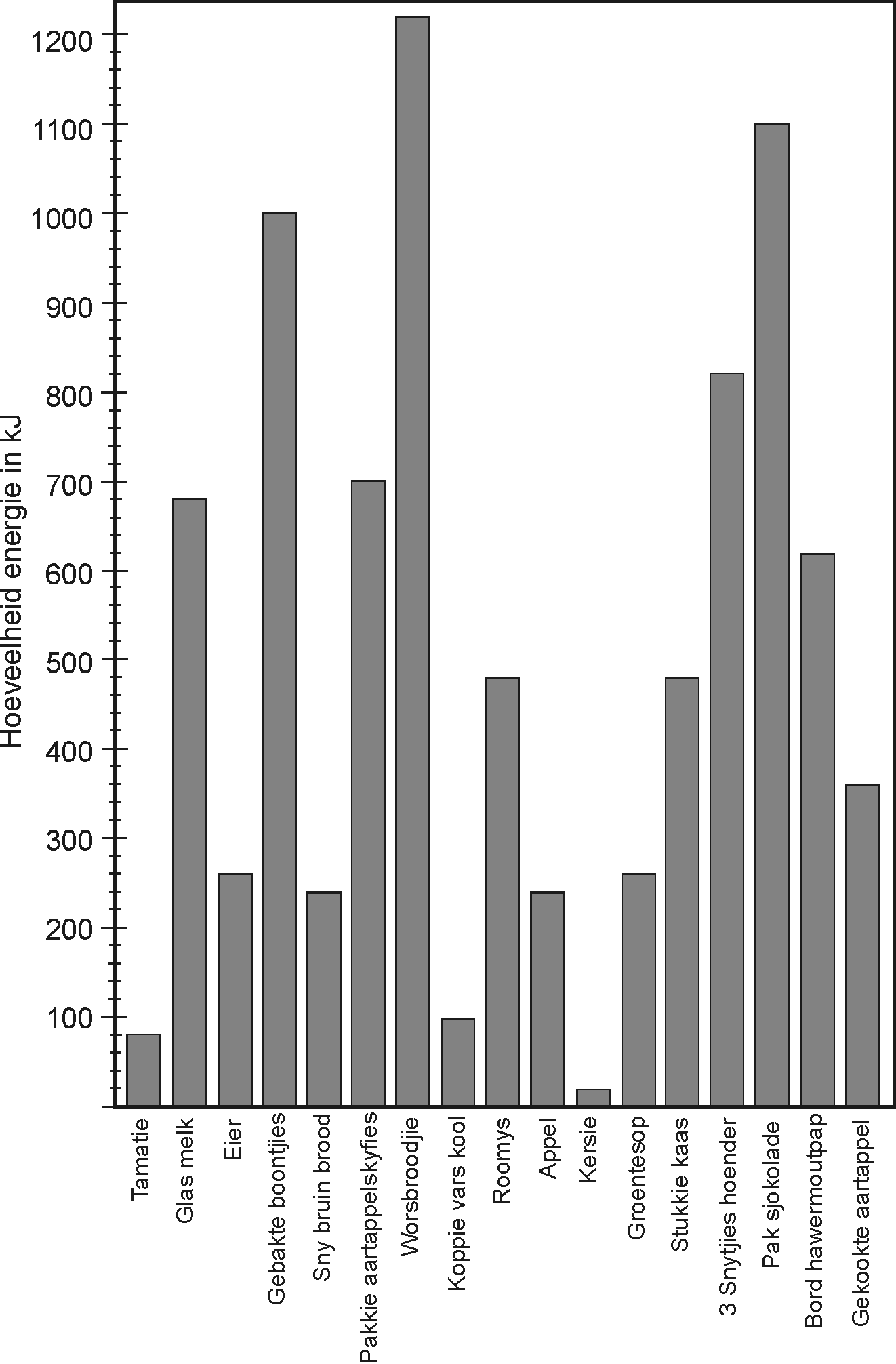| << Chapter < Page | Chapter >> Page > |
Opdrag 1:
Maak seker dat die leerders die blokdiagram kan lees. Aanvaar hul eie kombinasies, maar maak seker dat hulle so na as moontlik aan 11 760kJ kom. Voedselkombinasies moet ook aanvaarbaar wees, bv. boontjies en roomys is minder aanvaarbaar as 3 snytjies hoender en gebakte boontjies.
Die son as bron van energie
Plante as vasleggers van sonligenergie

Plante berg die energie in die vorm van koolhidrate. Deur ‘n gebalanseerde dieët te volg, kry ons genoeg energie van plant- sowel as diermateriaal om ons dagtake met genoeg lus en ywer aan te pak. Sonder voldoende energie sal ons lusteloos en moeg voel.
Kos as stoorplek van energie in chemiese vorm
Die volgende blokgrafiek toon die kilojoules van ‘n paar kossoorte. ‘n Twaalfjarige met ‘n gemiddelde massa van 40 kg het nagenoeg 11 760 kJ per dag nodig.

Voedselsoorte
Gebruik die blokgrafiek en werk uit wat jy in een dag behoort te eet om genoeg energie te verkry. Dit is belangrik dat jy die kalibrering (skaalindeling) van die grafiek sal verstaan voordat jy die assessering aanpak.
DIEËT VIR EEN DAG!!
_____________________________________________________________________
_____________________________________________________________________
_____________________________________________________________________
_____________________________________________________________________
_____________________________________________________________________
_____________________________________________________________________
_____________________________________________________________________
_____________________________________________________________________
_____________________________________________________________________
_____________________________________________________________________
_____________________________________________________________________
_____________________________________________________________________
_____________________________________________________________________
_____________________________________________________________________ _____________________________________________________________________
_____________________________________________________________________
_____________________________________________________________________
_____________________________________________________________________
_____________________________________________________________________
_____________________________________________________________________
_____________________________________________________________________
_____________________________________________________________________
_____________________________________________________________________
_____________________________________________________________________
_____________________________________________________________________
_____________________________________________________________________
_____________________________________________________________________
_____________________________________________________________________
_____________________________________________________________________
_____________________________________________________________________
| OPVOEDERASSESSERING: KRITERIA | 1 | 2 | 3 | 4 |
|
___ | ___ | ___ | ___ |
|
___ | ___ | ___ | ___ |
|
___ | ___ | ___ | ___ |
|
___ | ___ | ___ | ___ |

Leeruitkomste 2: Die leerder ken, interpreteer en pas wetenskaplike, tegnologiese en omgewingskennis toe.
Assesseringstandaard 2.1: Dit is duidelik wanneer die leerder inligting interpreteer.

Notification Switch
Would you like to follow the 'Natuurwetenskappe graad 6' conversation and receive update notifications?